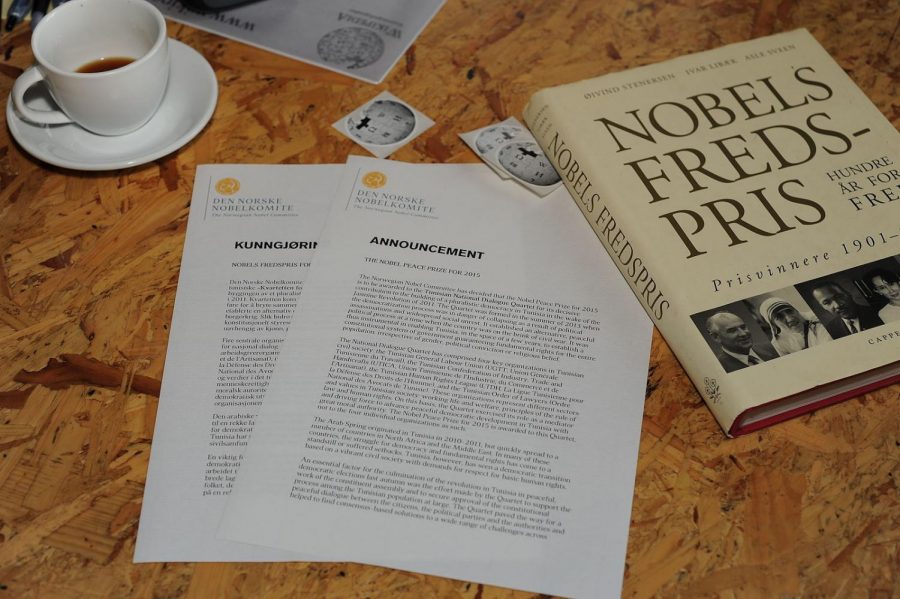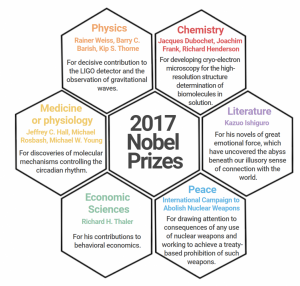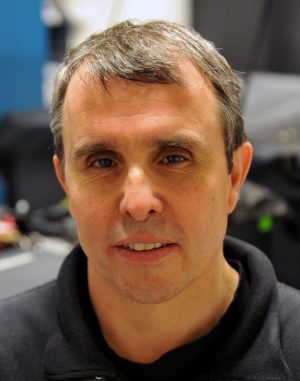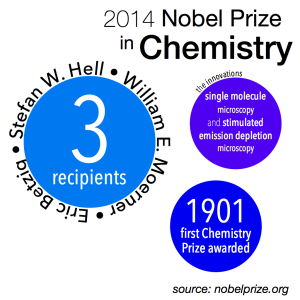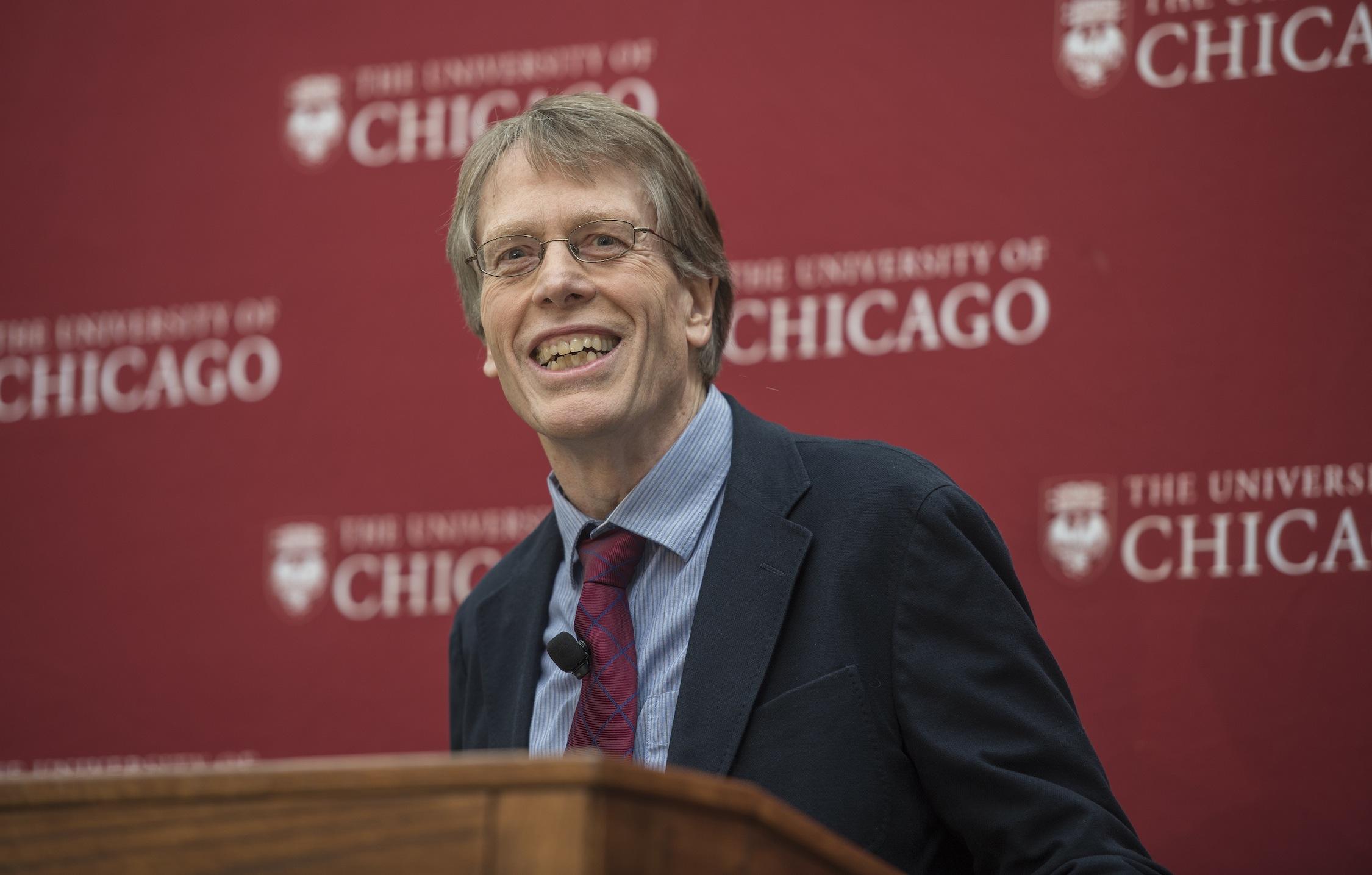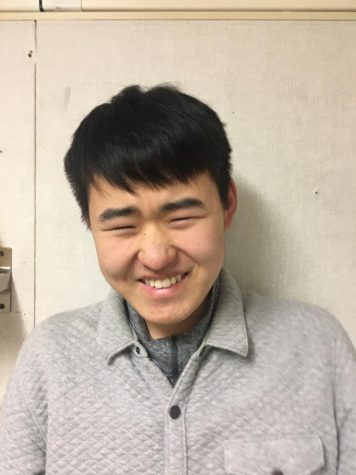Nobel Foundation awards 2018 prizes to laureates
Wikimedia Commons
The announcement sheets for the Nobel Prizes. The Nobel Foundation announced the laureates for Physiology or Medicine, Physics, Chemistry, Economic Science and Peace starting Oct. 1.
October 22, 2018
The Nobel Foundation announced the 2018 Nobel Laureates for Physiology or Medicine, Physics, Chemistry, Peace and Economic Sciences during the week of Oct. 1. The Nobel Prize in Literature was postponed until 2019.
Each year, the Nobel Foundation, established in 1900 by Alfred Nobel, grants a Nobel Prize to selected members of six fields (Physiology or Medicine, Physics, Chemistry, Economic Sciences, Peace and Literature) who have contributed the most towards the betterment of humankind. The Nobel Prize, as the medal is called, remains among the most prestigious of awards to this day.
Dr. James P. Allison and Dr. Tasuku Honjo won the Nobel Prize in Physiology or Medicine for their great contributions to the fight against cancer. Their research focused on using the stimulus of the human body’s natural defense against illness — white blood cells — to attack cancerous tumors. Their respective discoveries are milestones in the search for a sustainable cure.
One half of the Nobel Prize in Physics was awarded to Dr. Arthur Ashkin for his creation of optical tweezers capable of moving physical objects, allowing for the capture of living bacteria without harm. The other half was shared by Dr. Gérard Mourou and Dr. Donna Strickland for their development of the shortest and most intense laser pulses ever made. Their technique is used in the millions of eye corrective surgeries conducted yearly around the world. Its full range of uses is still unexplored.
Dr. Frances H. Arnold was awarded half of the Nobel Prize in Chemistry for her development and refinement of the directed evolution of enzymes. The many uses of her research include the environmentally friendly manufacturing of chemical substances and the production of renewable fuels.
The other half of the reward was shared by Dr. George P. Smith and Sir Gregory P. Winter. Dr. Smith won the award for his development of the Phage Display Technique, which uses viruses that infect bacteria to produce proteins. Sir Winter used this technique to create new pharmaceuticals by directing the evolution of antibodies.
Dr. William D. Nordhaus and Dr. Paul M. Romer each received half of the Nobel Prize in Economic Sciences. Dr. Nordhaus modelled the relation between climate change and the economy, and his models are used to predict the results of climate change legislation across the globe. Dr. Romer researched the differences between ideas and other goods and services in the market, laying the foundations of endogenous growth theory.
“This year’s Laureates do not deliver conclusive answers,” the Nobel Foundation’s press release on read, “but their findings have brought us considerably closer to answering the question of how we can achieve sustained and sustainable global economic growth.”
Dr. Denis Mukwege and Ms. Nadia Murad jointly received the Nobel Peace Prize, “for their efforts to end the use of sexual violence as a weapon of war and armed conflict,” the Nobel Foundation said in a press release.
The awards ceremony will be held on Dec. 10, 2018, in Stockholm, Sweden, for Physics, Chemistry, Physiology or Medicine and Economic Sciences. The Peace Prize will be awarded in Oslo.
This piece was originally published in the pages of the Winged Post on Oct. 17, 2018




![LALC Vice President of External Affairs Raeanne Li (11) explains the International Phonetic Alphabet to attendees. "We decided to have more fun topics this year instead of just talking about the same things every year so our older members can also [enjoy],” Raeanne said.](https://harkeraquila.com/wp-content/uploads/2025/10/DSC_4627-1200x795.jpg)


















![“[Building nerf blasters] became this outlet of creativity for me that hasn't been matched by anything else. The process [of] making a build complete to your desire is such a painstakingly difficult process, but I've had to learn from [the skills needed from] soldering to proper painting. There's so many different options for everything, if you think about it, it exists. The best part is [that] if it doesn't exist, you can build it yourself," Ishaan Parate said.](https://harkeraquila.com/wp-content/uploads/2022/08/DSC_8149-900x604.jpg)




![“When I came into high school, I was ready to be a follower. But DECA was a game changer for me. It helped me overcome my fear of public speaking, and it's played such a major role in who I've become today. To be able to successfully lead a chapter of 150 students, an officer team and be one of the upperclassmen I once really admired is something I'm [really] proud of,” Anvitha Tummala ('21) said.](https://harkeraquila.com/wp-content/uploads/2021/07/Screen-Shot-2021-07-25-at-9.50.05-AM-900x594.png)







![“I think getting up in the morning and having a sense of purpose [is exciting]. I think without a certain amount of drive, life is kind of obsolete and mundane, and I think having that every single day is what makes each day unique and kind of makes life exciting,” Neymika Jain (12) said.](https://harkeraquila.com/wp-content/uploads/2017/06/Screen-Shot-2017-06-03-at-4.54.16-PM.png)








![“My slogan is ‘slow feet, don’t eat, and I’m hungry.’ You need to run fast to get where you are–you aren't going to get those championships if you aren't fast,” Angel Cervantes (12) said. “I want to do well in school on my tests and in track and win championships for my team. I live by that, [and] I can do that anywhere: in the classroom or on the field.”](https://harkeraquila.com/wp-content/uploads/2018/06/DSC5146-900x601.jpg)
![“[Volleyball has] taught me how to fall correctly, and another thing it taught is that you don’t have to be the best at something to be good at it. If you just hit the ball in a smart way, then it still scores points and you’re good at it. You could be a background player and still make a much bigger impact on the team than you would think,” Anya Gert (’20) said.](https://harkeraquila.com/wp-content/uploads/2020/06/AnnaGert_JinTuan_HoHPhotoEdited-600x900.jpeg)

![“I'm not nearly there yet, but [my confidence has] definitely been getting better since I was pretty shy and timid coming into Harker my freshman year. I know that there's a lot of people that are really confident in what they do, and I really admire them. Everyone's so driven and that has really pushed me to kind of try to find my own place in high school and be more confident,” Alyssa Huang (’20) said.](https://harkeraquila.com/wp-content/uploads/2020/06/AlyssaHuang_EmilyChen_HoHPhoto-900x749.jpeg)



